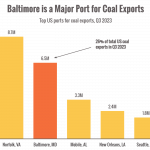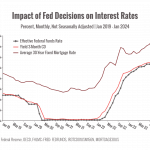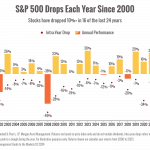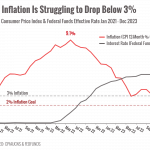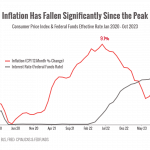Timing the Market Doesn’t Pay
Although it is tempting to actively alter your investments in an attempt to avoid loss in anticipation of market lows, historical data show that such efforts tend to backfire. Fidelity, one of the largest 401(k) providers in the U.S., recently published an analysis of 12.3 million retirement accounts that vividly demonstrates the financial risks of market timing. It’s important to note the comprehensive nature of the study period, Q3 2008 – Q1 2013, which starts from the pre-recession market high of 2008, through the deep bottom of Q1 2009 and the recovery to new highs in Q1 2013.
The figure above compares average account balance growth among three participant groups: Those who changed their asset allocations to 0% equity in the Q4 of 2008 or Q1 of 2009 and never returned (left pair of bars), those who moved to 0% equity but returned to some portion of equities by the end of Q1 2013 (middle pair of bars), and those who maintained an equity allocation throughout the period (right pair of bars). The blue bars represent all retirement accounts while the green bars track pre-retirees defined as participants age 55 and older.
As the figure above shows, the differences in growth are remarkable. Those who stayed the course fared substantially better than those who retreated altogether or tried to time the market. Investors who completely retreated from the stock market in Q4 2008 and failed to return saw their accounts grow by only 14.8% in the following 5 years (left blue bar). Contrast this to the exceptional 88.4% growth enjoyed by investors who stayed the course by holding stocks throughout the market cycle (right blue bar).
The takeaway is the same for pre-retiree investors (green bars). Disciplined investors who didn’t touch their stocks saw ~60% growth whereas market timers saw only half as much and those that fully retreated from stocks saw disastrous results.
Source: Fidelity




